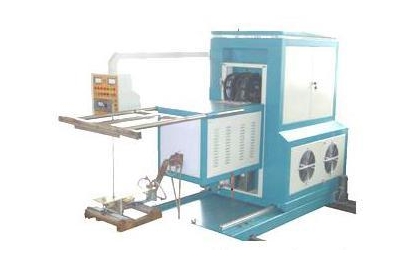- 07
- Sep
How to improve the service life of the inductor of the intermediate frequency quenching equipment?
How to improve the service life of the inductor of the intermediate frequency quenching equipment?
1) When the sensor is designed, it is made of oxygen-free copper, and attention must be paid to the structure to ensure sufficient rigidity.
2) Maintenance of electrical contact surface. The connecting surface between the sensor and the transformer is a conductive contact surface, this surface must be clean, it can be wiped clean with a soft scouring pad, and then plated with silver.
3) Special bolts and washers are required for bolt crimping design. The inductor contact plate is pressed to the output end of the secondary winding of the quenching transformer. Bolts and washers are commonly used to press tightly. The following points should be noted:
① The bolt holes at the output end of the transformer must be equipped with stainless steel wire threaded sleeves or brass threaded bushes. Because of the low hardness of pure copper, it will fail due to the thread sliding buckle, which will damage the output end. The bolt is screwed into the threaded sleeve with a depth of 10mm (take M8 thread as an example, and the rest can be deduced by analogy).
② This threaded hole must be tapped, otherwise the bolt seems to be unable to be screwed, but in fact the bolt does not press the sensor to the output end of the transformer. The screwed-in length of this bolt should be less than the depth of the screw hole, and the pre-tightening force of the bolt should be 155-178N. If the pre-tightening force is too high, the screw sleeve will be damaged (take M8 thread as an example, the rest shall be according to the specified value).
③. The washer should be a specially-made enlarged and thickened washer, which can effectively press the part tightly.
(4) A groove should be designed in the middle of the bonding surface of the sensor to increase the pressure of the conductive surface. This surface is plated with silver as much as possible to prevent oxidation and reduce contact resistance. The chamfers on both sides of the insulating plate can prevent a short circuit on the transformer side when the inductor is installed improperly.
With the advancement of technology and the increase in the price of sensor manufacturing, the cost of the sensor as a tool is consumed more and more attention. The service life of the sensor ranges from nearly a hundred times to hundreds of thousands of times. Roller inductors and raceway scanning quenching inductors have a shorter life due to their long load time each time; while the quenching inductors of CVJ parts have a shorter load time each time, and their lifespan is longer than hundreds of thousands of times.
In order to detect the service life of the sensor, there is now an independent sensor cycle calculator available on the market. It is installed on the sensor. It can accumulate counts and store data every time the power is turned on, and display the service life of the sensor, such as 50,000 Times or 200,000 times and so on.

